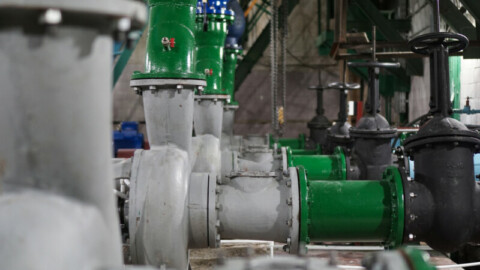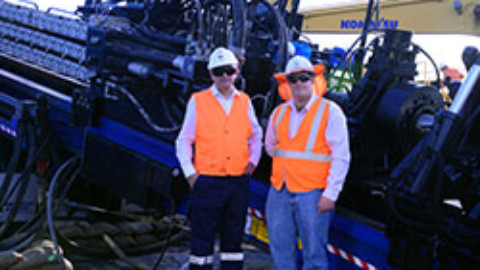Energy losses in a pump can take on many forms. Some energy losses can be easily measured, for example, vibration, noise, bearing temperatures and cooling water temperatures. These energy losses are, however, small in comparison to the vast amount of wasted energy that is carried away by the fluid flowing through the pump.
The total amount of energy in the pumped fluid is the sum of the energy used for useful work and energy that was lost due to inefficiencies in the pumping process. Total energy = useful energy + wasted energy.
The quantity of wasted energy in the pumped fluid is indicative of the condition of the pump’s internal components.
As the pump deteriorates, the amount of wasted energy will increase. The main contributors to excessive energy losses include: friction, shock losses, cavitation and internal recirculation. As the pump’s condition deteriorates over time, an increase in the amount of wasted energy will be detected. By continuously monitoring the energy wastage, asset managers have a reliable tool to confidently minimise the life cycle costs of the pump by accurately forecasting maintenance and renewal expenditures.
The actual total increase in energy of the pumped fluid can be determined by measuring the changes in pressure and temperature of the fluid on either side of the pump. Using Bernoulli’s energy equations to determine the energy required to do the work, the amount of wasted energy is found by deducting the useful energy from the total measured energy.
The change in pressure across a pump is large enough to be measured by accurate off-the-shelf pressure transmitters. The change in temperature across a pump, however, is extremely small and cannot be detected by commonly used temperature sensors. It requires a device that can measure changes in temperature to an accuracy of less than 1mK (0.001°C).
Employing the latest technological advances, Marcor International offers an affordable solution to measure the amount of wasted energy. The affordability of this technology is such that the return on investment is calculated in days and weeks, rather than years.
For more information, visit www.marcor.com.au.















